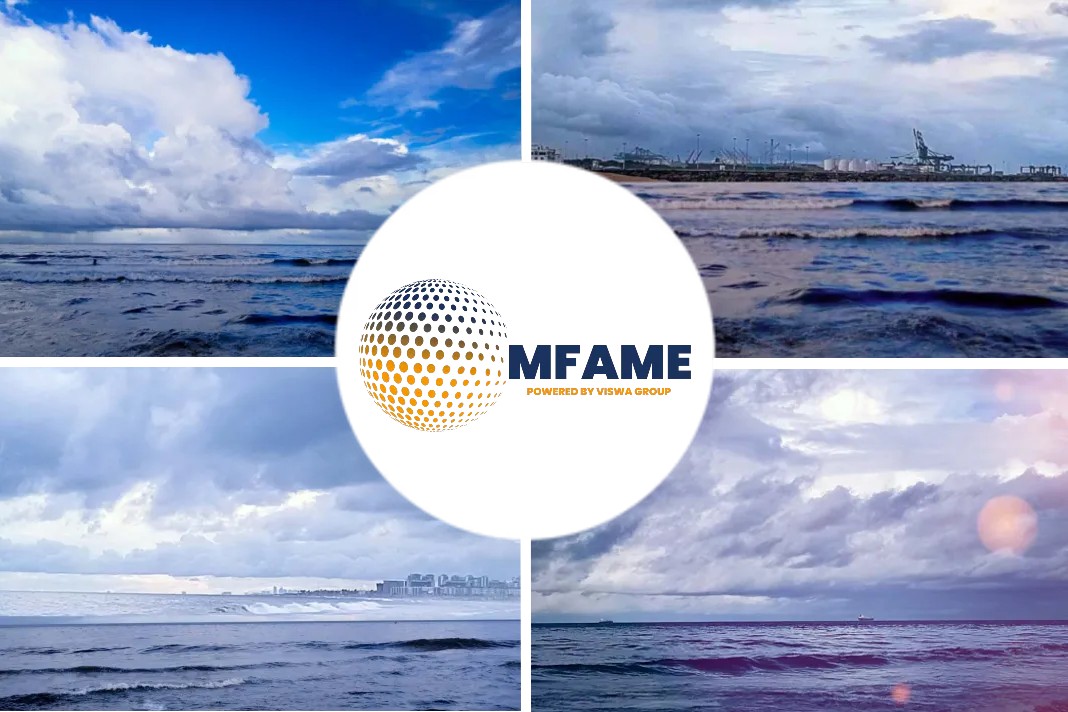Vessel owners are using digitalisation and weather information to optimise voyages and improve vessel performance, reports Riviera.
About the event
Attendees of Riviera Maritime Media’s Digitalisation and the value of weather enhanced data: key considerations for vessel performance management systems webinar were presented with examples of how owners are benefiting from increasing levels of data analytics.
This event, sponsored by DTN, was held 6 July 2022 during Riviera’s Ship Navigation & Route Optimisation Webinar Week.
On the expert panel were: P&O Maritime Logistics head of technology and logistics Kris Vedat, Carisbrooke Shipping IT manager Daniel Lewandowski and DTN product manager Jarco van den Brink.
Data streams
They discussed the role of data streams in voyage optimisation and vessel performance management, the importance of digital-twin models and data quality checks.
Mr Vedat explained how P&O Maritime Logistics uses data streams to optimise logistics to offshore installations in areas its vessels operates and explained how P&O has improved offshore logistics to oil and gas production platforms and drilling rigs in the Caspian Sea and North Sea.
“We face challenges in offshore logistics,” Mr Vedat said. These include siloed operations, competing priorities, varied voyage requirements and non-optimised route plans, involving single journeys from shore to rigs. This results in “low asset utilisation, long distances travelled and high fuel burn.”
But if demand for offshore supplies can be integrated, routes can be optimised “resulting in higher asset utilisation, fewer vessels, lower distances and fuel burn,” said Mr Vedat.
P&O Maritime Logistics uses data from cargo requirements, vessels, inventories, weather and sea conditions in its artificial intelligence (AI) modelling.
“We use telemetric data and information from operations, berthing space at shore bases, rig availability and vessel positions,” he said.
From vessels, the owner has information on cargo capacity, engine performance, fuel consumption and speed across water. Inventory data includes weight, volume, type and status, while operational data includes weather, sea routes and speeds and demand information incorporates materials, time, priority and status.
Improving logistics
P&O Maritime Logistics also considers constraints such as time windows for cargo transfers, deck space, vessel capacities, fuel capacity, vessel speeds, platform location, crane and deck capacity and availability of vessels at the platform.
In the Caspian Sea, the company’s optimisation improved offshore logistics by 60%. It has freed up four vessels for other work, shortened delivery times, reduced distances travelled and fuel consumption, said Mr Vedat.
In the North Sea, where there are more constraints, it has improved offshore logistics 12-24%, shortened deliveries, cut sailing distances and reduced fuel use.
Mr Lewandowski looked at vessel performance management and using weather and ocean data for voyage optimisation. To manage and monitor vessel performance, four main types of data, information and processes are required.
Navigational data, including distance travelled and ship speed, weather and current information, sea state and swell, and access to detailed route planning.
“Voyage performance monitoring includes fuel consumption and performance analysis for historical and ongoing voyages,” said Mr Lewandowski. Owners can “start with daily reports, but it is recommended to use frequent data from flow meters.”
Proactive voyage monitoring
The next stage is proactive voyage monitoring by crew for charterparty information, just-in-time arrival and main engine power and propeller-pitch recommendations. Shipowners can carry out long-term analysis of vessel performance, such as hull fouling, monitoring propulsion system performance and improving maintenance and drydock planning.
Although computers can process some of this data, there is still a need for humans. “Someone needs to interpret data,” said Mr Lewandowski. “Create a team responsible for voyage monitoring. Operations teams can help minimise the fuel consumption, maximise operational efficiency and optimise fleet performance,” he said.
Carisbrooke Shipping has used advanced data processing and human interpretations to optimise its shortsea voyages.
In one example, it saved around US$6,000 on a route from France to Scotland through the Dover Strait. In a second example, the shipowner saved US$1,900 by making minor changes to a ship route to benefit from ocean currents along the Brazilian coast.
Mr van den Brink explained how shipping companies are progressing along weather-maturity curves by implementing more advanced software and solutions for voyage optimisation.
5 stages
There are five stages along these curves shipowners can benchmark themselves against to understand their digitalisation journey.
The first of these, Mr van den Brink explained, was being passive, “with no specific data that is used in the decision-making process.”
Further along the curve is “operative – the point where solutions are in place to solve specific use-cases.” Stage three is “cohesive – where data is integrated to serve multiple use-cases” and then there is “predictive – with full data integration for decision making.”
Mr van den Brink said the final one, prescriptive, is still a future stage “where artificial intelligence is applied widely to make strategic decisions.”
He said progressing up the curve is easy for the first stages but it becomes more complicated. “More cross-collaboration with data becomes necessary further up the curve,” he said.
He recommended shipowners “understanding the stage they are at and formulate a roadmap to unlock greater value.”
When it comes to voyage optimisation, passive and operative stages use data for on-off use cases, whereas at the cohesive stage, owners use weather routeing as data input to voyages.
At the predictive stage, “optimised routeing, based on weather conditions, is for avoiding bad weather and for just-in-time arrival,” said Mr van den Brink. “Prescriptive involves AI applied for fully optimised supply chains, at some point in the future.”
He said shipowners and charterers can collaborate with service providers to get to this stage.
“The weather-maturity curve goes hand-in-hand with access to data and using this in business processes,” he said. DTN is able to help companies move up this curve.
Did you subscribe to our daily Newsletter?
It’s Free! Click here to Subscribe
Source: Riviera






















